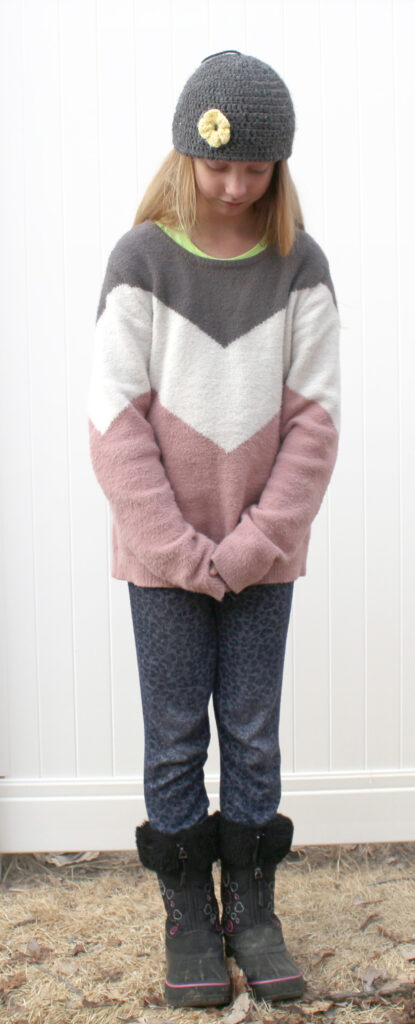BITE PREVENTION WEEK
April 7 – 13, 2024
Bringing up the topic of dog bites can take an easy Sunday afternoon chat and launch it into a no-holds barred cage match amongst the most respected acquaintances. Conversations can take sharp turns in many directions to try and determine the true cause. Debating things like breed, nature vs nurture can easily escalate into less than civil discussions due to people’s passionate love of their four-legged companions, combined with their own personal experiences.
Our goal is not to get into such granular deliberations, but rather, to review ways which you can avoid being in a situation to be bitten in the first place. Prevention starts with preparation.
Living in Canada has its advantages but getting current information on our country’s dog bites stats isn’t one of them. There are several reasons for this, but again, the focus isn’t for us to nail down cause, but rather for us to use this information to prevent them in the first place. Particularly with our most at risk: children.
Why do dogs bite?
It of course depends on the dog and situation, but often it’s because they feel threatened personally or for something they value, like a toy or food. Dogs who are ill or in pain can also be asking to be left alone. And the truth is, any dog can be pushed to bite under the right circumstances.
Despite us moving our dogs from outdoor working staff to indoor Lords of Leisure, we don’t always know as much as we should about them. We often say how nice it would be to know what our dogs are thinking, however, when they do try to tell us, often we aren’t listening.
Many people feel bites come out of nowhere, but more often than not, there are warning signs leading up to the event. Yawns, lifted paws, whale eyes, backing away, tucked tails, flattened ears are all signals dogs give us indicating their discomfort. Understanding a dog’s body language is one of the most important things we can learn as guardians. Not only to help our dogs communicate more clearly, but also to inhibit their need to tell us “louder”.
As an owner, its our job to socialize our dogs in various scenarios so that the world is less scary to them. Dogs go through a few fear periods during their transition from puppy to adulthood, and working through the things that make them afraid, will help to lessen their stress levels. Bite inhibition and impulse control are a few other foundations that shouldn’t be overlooked during their formative months. And while we might not be able to make them comfortable with everything, we can try to prepare them for familiar situations they will encounter during their lifetime.
As a parent, its our job to ensure our children understand a dog’s need for space. Little hands that grab fur or tails, voices that squeal, and toys or beds that are invaded, can be triggers to a dog that they are at risk and need to act because no one else is. It is up to us to teach our children to respect animals by not allowing them to climb on or tease them, and most importantly, never leave them alone together. Even momentarily with the most serene of dogs. We have to remember that at the core, dogs are animals and children are undeveloped humans and should be treated as such.
As adults, we need to stop thinking that every dog wants to meet us or our dog. You should never approach another dog’s space unless you ask the other owner whether or not its ok. And whatever the answer is should be respected and not taken personally. If someone says no, its not because of you. They’re likely just working through something with their dog and need
the space.
Owners should feel comfortable advocating for their dog’s space. If your dog is giving signs they are uncomfortable, remove them from the situation. Get comfortable telling people “no, thank you” when asked if they can pet your dog or have their dog meet yours. Its your job to ensure good interactions which will help boost your dog’s confidence. If a straight no seems too harsh or out of your own comfort level, you can just say they aren’t feeling themselves today so maybe another time.
When we don’t advocate and people hover over our dog, raise their hands above their heads, and encroach upon their space when eating or chewing, we are allowing behaviours that can be considered threatening to an animal’s security. Give your dog permission to choose the interactions they have versus it being forced upon them.
5 Canadian Dog Bite Statistics1

In Canada, it’s estimated
that there are over 500,000
Dog Bites Annually

Most commonly bitten are
Children Ages 5-9

Most commonly bitten areas on Adults are Hands, on Children the Face & Neck

One to two fatalities estimated per year from dog attacks in Canada.
Fatalities between 1990 and 2007, 24 of the 28 fatalities were children under 12.

The prairie provinces had the Highest Incidents of fatal dog attacks.
1 https://www.dogster.com/lifestyle/dog-bite-statistic-canada, article written by Kathryn Copeland, updated March 2024 by Kathryn Copeland
BE A TREE
Doggone Safe programs like Be a Tree through The Pet Professional Guild can offer additional educational services for schools and groups.
The program provides information in a way that can easily be understood by adults and children alike. One of the main takeaways is to teach your child to act like a tree when encountering a loose or excited dog.

BODY
Stand still with legs together and arms at your side or clasp your hands together low in front of you.
HEAD & EYES
Don’t make eye contact. Look down at your feet, not directly at the dog.
QUIET & STILL
Avoid hitting, running, screaming, or yelling as it will only increase the dog’s arousal.
PROTECT
If you are knocked down, use your arms to cover your neck and head and curl into a ball.

This is a big topic and there are many things to comprehend. Too many for one article. So this year, celebrate National Dog Bite Prevention Week by reading up on additional safety and training tips, along with reading body language cues. And don’t forget to share this information with your family and friends – it could save a life.

